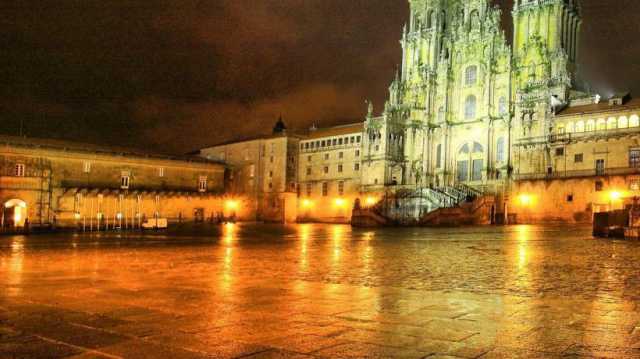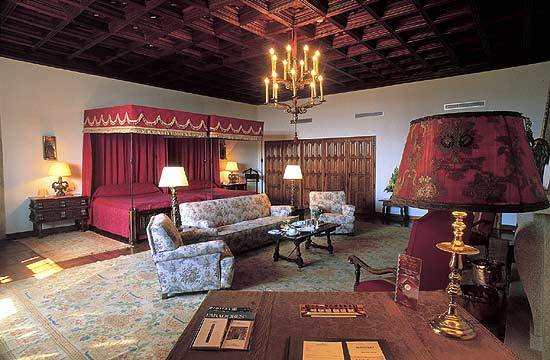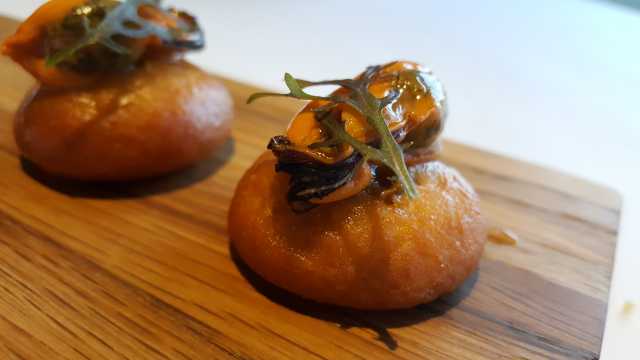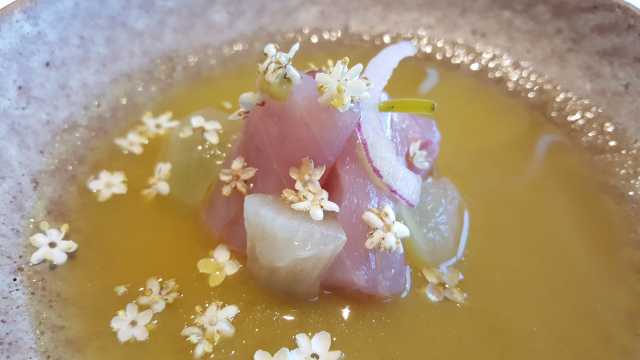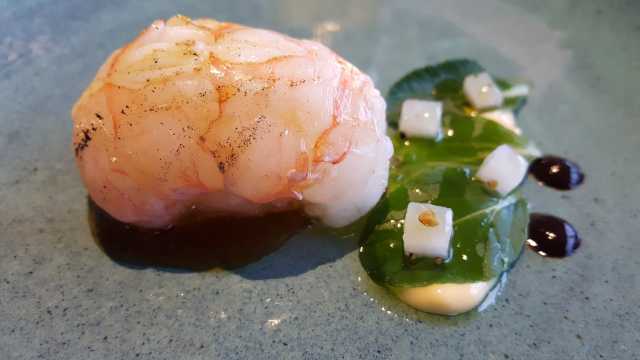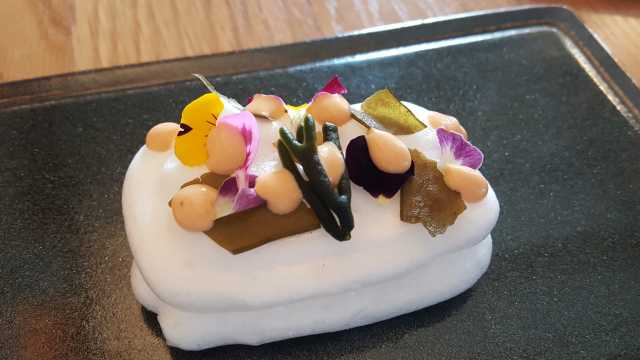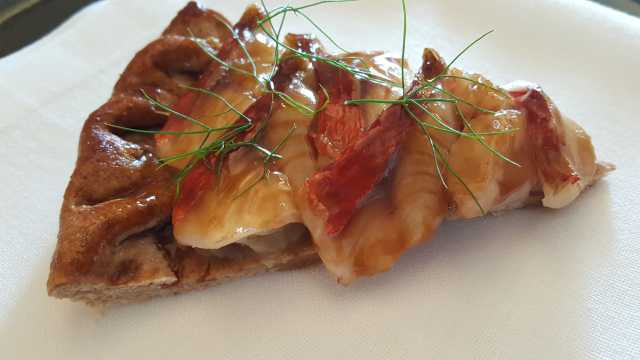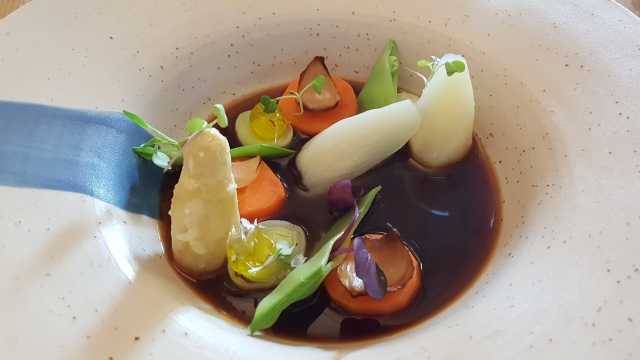TO BEGIN:
My husband and I went to the Basque Country, both French and Spanish, for the first time before we got married, driving up the Costa Brava, turning west into France, passing through Carcassone, Osses, St Jean Pied de Port and other little towns, visiting wineries of Irouleguy and Jurancon, before ending up back in Spain, with San Sebastian our last port of call. This trip began our love affair with San Sebastian, which I have documented on this board, and we have been visiting every year around the same time to enjoy the bounty of seafood and produce sourced locally. As we learned more and more, we noticed a trend – whenever we asked “where do these prawns come from?” Or “What is the source of this amazing beef?” The answer was almost always “Oh, those are from Galicia!” So we determined that, since we loved what came from Galicia so much, we’d have to visit the Motherland herself. We made our first visit to Galicia last year, and were immediately hooked.
We base ourselves just outside the town of Santiago de Compostela, where the famous cathedral draws pilgrims and hikers from around the globe. The whole region of Galicia is small, and most towns can be reached from this central point within an hour’s drive. Santiago is particularly appealing, with a beautiful old quarter, large and thriving market, and a dedication to typical Galician food possibly unrivaled in the region.
One of the first things one notices upon dipping a toe into the Galician food scene is how inexpensive everything is. In the Santiago market, there is both a restaurant and a less formal tapas bar called Abastos 2.0, owned by the same restaurant group with a place in Madrid and another (more to follow!) at the seaside in Carill. The tasting menu at the counter in the market – preferable, in our opinion, to the indoor restaurant – is 21 EUR and consists of two raw seafood courses, a few tapas and a “main course” plus a dessert. Each is carefully prepared, using the freshest, high quality local ingredients. The razor clams were prepared sous vide, we were told, cooked at 64 degrees Celsius for 10 minutes, in their shells, then treated only with lemon and sea salt. They were perfection, as was the “empanada” of mackerel, red peppers and onions, served on a crispy fried pastry disk and topped with olive oil. We knew from previous visits that, if the octopus wasn’t part of the menu, we should order it separately, which we did. It was tender inside, crisp seared on the outside, and accompanied by a few slices of hot, roasted potatoes. The extra course cost us 12 EUR, and the bottle of balanced and slurpable Albarino was another 18EUR. That, with a round of the local version of gin and tonics, brought us to a grand total of 85 EUR. If you know how to spend well under 100 EUR for a sophisticated and delicious, not to mention filling, meal, including a bottle of wine and cocktails, in Europe and do better than this, I’d love to know where! We went back the next day.
On the recommendation of a friend who runs a top pintxos bar in San Sebastian, we booked dinner Friday night at a Michelin recommended restaurant about 30 minutes from Santiago called O Balado. All the reviews and articles made it clear that this place was decidedly family owned/run and located in a remote farmhouse. Having been to many examples of remote farmhouse restaurants – some more remote than others – we were prepared for just about anything. Still, we might have missed it except for a professionally designed, though discrete, sign indicating where to park. We turned in, and left the car in the empty lot (our booking was for 8:30 and we were the first diners there – a couple was just sitting down when we left at 11), adjacent to a field containing a goodly number of brown sheep, confident we were in the right place. Even knowing that, however, it was difficult to reconcile the notion of a Michelin recognized restaurant with the white clapboard house, complete with a dilapidated swing set and plastic children’s tricycles strewn about. We peeked our heads through the door, and found ourselves in a cozy room containing a huge open fireplace and 5-6 small tables. Each table had one chair draped with a knit shawl – one assumes it can get cold in that kind of drafty house – and the windowsills were lined with empty wine bottles. We spotted one champagne, but other than that, all of them (and there were a LOT) were local reds and whites.
Marta, the lovely owner who greeted us, spoke maybe 5 word of English, which is about the amount of Spanish we speak. The chef, she conveyed, only speaks Gallagos, the local dialect, so that was no help at all. With the help of Google Translate, we managed to get across that we eat everything, and wanted to drink whatever she thought was best with the food. She nodded sagaciously, and brought out two local whites, one which cost 19 EUR and the other 18EUR. We asked her to choose, which she did without hesitation. What followed was the epitome of respect for local ingredients, prepared with skill and appreciation – butter made in house, cheese the same, using milk from their own sheep and goats. Salmon smoked in the huge open fireplace. Lamprey first smoked then roasted in the fireplace. Lamb ribs. Percebes. Gallician beef….everything came from the surrounding region, and most was made by the chef. One dish stood out from the rest – a simple croquettes or cuttlefish ink and potato. So often, squid ink might as well be food coloring, it’s so in the background. This highlighted the briny, deep, dusky taste of the ink, lifting it with delicate panko breading and perfect texture. We agreed that this dish was among the highlights of recent memory.
To try and convey the earnest, down to earth quality of the restaurants here, and this one in particular, let me tell you a story about choosing the red wine. When the menu seemed to be switching to meat, we asked about a red, saying we didn’t like too much oak. Marta brought out a few choices (no written wine list, apparently), but we weren’t excited about them. We saw an empty bottle from a producer that we like and pointed to it questioningly. She nodded and disappeared, to return a few minutes later with a bottle we know and like. We smiled, nodded, gave the thumbs up. She seemed concerned and asked for my phone so she could type something in the translate program. She wanted us to know that this wine cost more than the others – 25 EUR. Was that ok? It was incredibly sweet, and not the least bit affected. She was just concerned since it was expensive compared to the other wines she had offered.
We left feeling wonderful – excellent, honest food, with deep flavors and serious ingredients, not fussed with in the least. An incredibly comfortable setting (we heard their kids stomping around upstairs during dinner, which embarrassed her but didn’t bother us in the least), warm and friendly service despite no common language, and that certain je ne sais quoi that roots a place in your heart. And, might I add – the entire meal with two bottles of wine for both of us was 135 EUR. The menu we ordered was 40 EUR, but we replaced dessert with an extra savory which cost a bit extra, and had coffee afterwards. Tough to beat that. We’ll be going back next year for sure. The world needs more restaurants like this one. And more restaurateurs who understand how to make guests feel welcome.
